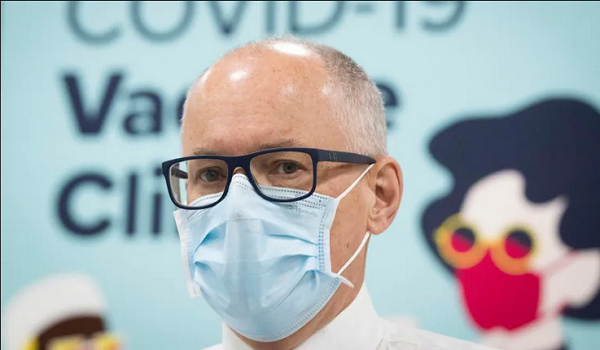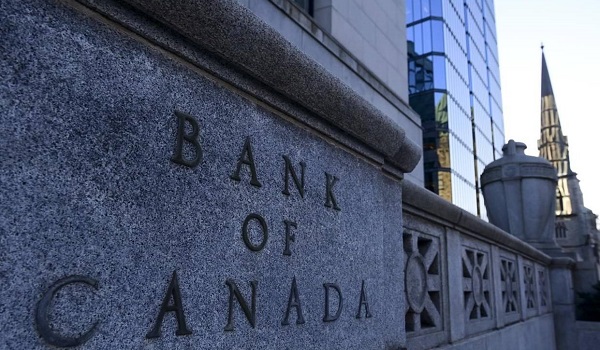Ontario’s top doctor issue notes of warning on COVID wave
With COVID-19 once again surging in Ontario, and hospitalizations for people testing positive surpassing a one-year high, too few older adults have received the updated COVID vaccine, prompting the province’s top doctor to sound the alarm.
In a “call to action,” Chief Medical Officer of Health Dr. Kieran Moore is urging more people — especially older adults — to get vaccinated against COVID ahead of the busy holiday season.
And with influenza season now under way, Moore is also pushing for more people to get a flu shot, not only to boost individual protection but to help blunt a surge of infections that could further strain the hospital system.
He said influenza cases and hospitalizations are expected to “dramatically rise” in the coming weeks, along with RSV infections.
“We are heading into a difficult time,” Moore told the Star.
He said there is already a high level of COVID activity across Ontario, with more than 1,500 people in hospital testing positive for the virus, the majority of whom are older adults.
“Seeing this rise (in infections), we are trying one last effort to have as many Ontarians vaccinated as possible … It’s a call to action, a call to arms.”
Moore said just 42 per cent of adults 65 and older have received a COVID shot in the last six months. Only 38 per cent of individuals in that age group have received an updated COVID vaccine that targets XBB variants.
“Forty-two per cent is certainly low. And I fear that will lead to increased hospitalizations, as we’re seeing, and potential deaths.”

With the health system bracing for a spike in patients with COVID, influenza and other respiratory infections, experts are welcoming Moore’s latest calls for people to get vaccinated.
But they also question whether such calls could have come sooner and say there needs to be stronger and more consistent messaging about the need for updated COVID vaccines and flu shots, along with the ongoing benefits of public health measures, such as masking, rapid testing and staying home when sick.
“The uptake of vaccines is just not where it needs to be,” said Dr. Fahad Razak, an internist at Toronto’s St. Michael’s Hospital and Canada Research Chair in data-informed health-care improvement at the University of Toronto. “We’re missing an opportunity to protect the population in general, to protect common resources like hospitals and to protect high-risk individuals by getting them the layer of protection they need.
“Right now, even with a severe push, I worry (the low vaccine uptake) will leave our health system at high risk for congestion and for emergency rooms to again be overflowing.”
Matthew Miller, director of the Michael G. DeGroote Institute for Infectious Disease Research at McMaster University, said public health leaders could have stronger messages about the benefits of vaccines at the population level.
“The vaccines do quite a good job of decreasing rates of infection in the first three months post-vaccination,” he said, noting messages that stress the benefits of population protection are particularly important heading into the winter when more people are gathering indoors.
“When we start to see COVID alongside a bunch of other nasty respiratory viruses, like influenza and RSV, and when we are inside and have a high density of celebrations during the holiday season — an environment conducive to spreading illness — there is an added benefit (to vaccination) because of these seasonal factors,” said Miller, Canada Research Chair in viral pandemics.
“Vaccines can be really important in blunting spikes in hospitalizations, emergency room visits and urgent care visits that tend to come to a head in winter.”
On Thursday, the Ontario Hospital Association released a statement urging Ontarians to get vaccinated against COVID, influenza and RSV, if eligible, stating that hospitals “have already seen a significant influx of hospitalizations due to seasonal respiratory illnesses.”
“The more people are vaccinated and stay well and safe, the greater the capacity our hospitals have to provide the acute life-saving care to those who need it most,” the statement said. The OHA noted that “hospital occupancy is already tight at 97.5 per cent” and that the number of patients admitted to hospital with COVID, influenza and RSV “has been steadily increasing.”
Razak said Ontario has a one-year high of individuals admitted to hospital testing positive for COVID, a trend that is also playing out at St. Michael’s Hospital where in the last few weeks “we’ve had one of the highest number of admissions (testing positive) in the last year.”
He said the risk remains highest among the elderly because COVID is more severe in that age group and because the infection can exacerbate other illnesses, such as COPD or asthma, heart failure and dementia.
Moore said the province is “prepared for any surge across the acute care sector,” including Ontario’s children’s hospitals, which are holding daily meetings to monitor bed and surgical care capacity. Last year, pediatric hospitals were overrun with children sick with viral illnesses, forcing them to cancel scheduled surgeries to free up staff and beds.
As of Dec. 3, there were 126 people in hospital with influenza — a number Moore said has “accelerated from a base of about 50 just weeks ago.” Last year, he said, there were more than 500 people hospitalized with influenza. He said the majority of people who get sick with influenza are older adults and those with underlying illness.
Moore said he hopes COVID levels will soon reach a peak and start to decrease to help ease pressures on hospitals, though he remains worried about the impact of respiratory viruses on the health of Ontarians, particularly vulnerable older adults.
The province’s wastewater signal, the most accurate way to determine weekly COVID cases, continues to increase and the most recent data from Public Health Ontario shows the overall signal hasn’t been this high since late 2022.
Public Health Ontario’s most recent epidemiological summary shows that COVID variant HV. 1 — a descendant of the Omicron XBB family — is the most prevalent lineage in the province, now estimated to make up nearly half of all cases. Experts say the updated COVID vaccine is a good match for HV.1.
As of Dec. 5, about 1.8 million Ontarians have received the updated XBB COVID vaccine, said Moore. That’s about 12 per cent of the population six months and older.
He said in the last two weeks there has been a drop-off in people getting the XBB vaccine, prompting his team “to reinvigorate our communication strategy,” which includes messaging from local public health agencies and hospitals, as well as recent interviews with media outlets “to raise the alarm.”
Though only 42 per cent of adults 65 and older have received the updated shot, Moore said vaccine uptake is higher among residents of long-term-care facilities and retirement homes. About 55 per cent of residents in long-term-care homes and 58 per cent of residents in retirement homes have had a dose within the last six months.
However, he said he would still like to see a greater proportion of older adults protected against the newest COVID strains, adding “protection from the virus fades rapidly, especially in the older adult population.”
Moore said in addition to encouraging immunization, he is also reminding people of the importance of taking basic precautions this viral season. These include staying home with an active respiratory illness, wearing a mask in indoor public spaces and practising good hand hygiene, which is particularly important to reduce the spread of influenza and RSV.
“If you are vulnerable or have an underlying illness, masking can decrease your risk of acquiring these infections,” Moore said. “Wearing a well-fitting mask in indoor public spaces has worked in the past and it should work going forward.”
As of this week, Moore said there are more than 200 people in hospital with RSV; about half are children four and under, and half are 65 and older.
In Ontario, the RSV vaccine — recently approved by Health Canada for people 60 and older — is only available for free to people in that age group who live in long-term-care homes, Elder Lodges and some retirement homes. Older adults who want to have the RSV vaccine can purchase one with a prescription from their primary care provider; it can cost upwards of $250.
For older adults, especially those who are frail with underlying health conditions, RSV comes with a high risk of severe illness, hospitalization and death, said Miller, adding that Ontario’s RSV vaccine program will help blunt these risks.
“Our tools to prevent infection in the most vulnerable are expanding … we just have to make sure that we use them,” Miller said. “The most vulnerable adults now have a trifecta of vaccines available to help protect them.”
This article was reported by The Star











